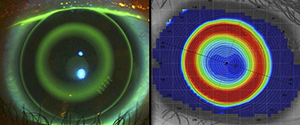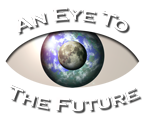The Myopia Control Center at An Eye To The Future specializes in optometric care of children and young adults with myopia. In addition to providing conventional glasses and contact lenses for clear vision, our services include options for controlling the progression of myopia. The latter options are likely to most benefit those with early onset (i.e. nearsightedness developed before the age of 10 years), and/or fast progressing myopes, who are at greatest risk of becoming high myopia (< -6.00D). One or two parents who have myopia represents another risk factor. Finally, lifestyles of today include more time reading or using handheld devices instead of time outdoors, which also increases the likelihood of myopia.
What services do we offer?
Our team uses specialty equipment and techniques to comprehensively evaluate the refractive errors (i.e. myopia) and the ocular size and shape of our patients’ eyes. These measurements along with myopia progression history and family history are used to determine an optimal myopia management strategy.
1. Orthokeratology:
Orthokeratology is a technique that uses rigid gas permeable contact lenses to gently reshape the cornea (the front surface of the eye) as the patient sleeps. The lenses re-align the light to focus on the retina allowing patients to see clearly all day without wearing any contacts or glasses. Although the use of Corneal shaping lenses is not FDA approved specifically for myopia progression control, many studies suggest that these specialized lenses may reduce the progression of myopia (nearsightedness) for many children.
2. Specialized soft contact lenses:
Brilliant Futures Myopia Management Program
- This program used the MiSight 1 day contact lens, the first and only contact lens FDA-approved to slow the progression of myopia in children age 8-12 at initiation of treatment.
- A 3-year Randomized Clinical Trial of MiSight Lenses for Myopia Control
Soft Distance Multifocal Disposable Contact Lenses
- This option is an off-label use of soft contact lenses. It was found in various studies and case series that these lenses help to slow myopia in children.
- The unique extended depth of focus daily disposable multifocal contact lens, Naturalvue Multifocal 1 Day Contact lens, was effective in slowing myopic progression in children adding to growing evidence for this method.
- Case Series Analysis of Myopic Progression Control With a Unique Extended Depth of Focus Multifocal Contact Lens
- BLINK study
- Multifocal Contact Lens Myopia Control
3. Low-dose Atropine therapy:
Low-dose atropine therapy has also proven effective in slowing the progression of myopia. Atropine is a non-selective antimuscarinic agent. The exact mechanism by which atropine slows progression is not fully understood, however many studies have shown it’s efficacy.
- ATOM 2 Study
- However, a recent study found orthokeratology to be more effective than atropine. Learn more HERE
How CRT® Brand Contact Lenses Work to Correct Nearsightedness
What is Myopia?
Myopia or nearsightedness is the inability to see objects at a distance clearly. The problem is due to the eye growing too long causing light to focus in front of the retina. With higher levels of myopia, a person develops significantly increased risk of potentially blinding ocular complications including retinal detachment, myopic maculopathy, glaucoma and cataracts. Myopia has continued to increase across the world, at least in part due to our change in visual habits and increased time devoted to near activities.
Myopia Education Video from CooperVision Contacts on Vimeo.
Signs and Symptoms
- Difficulty seeing objects far away, such as road signs or a blackboard at school.
- Vision seems clearer when squinting
- Eyestrain, headaches
- Moving closer to objects such as screens and televisions
Detection and Diagnosis
Testing for nearsightedness may use several procedures in order to measure how the eyes focus light and to determine the power of any optical lenses needed to correct the reduced vision. Nearsightedness is detected in children and adults at any age during a comprehensive eye examination with a vision test and refraction.

Research Studies of Corneal Shaping Therapy Lenses and Controlling Myopia Progression
Myopia treatment progression studies involving Corneal Shaping Therapy (Ortho-K) include;
- REIM Study (2003). Tom Reim OD,FOAA and colleagues initially published the potential of Ortho-K myopia control in 2003. This study reported that corneal reshaping patients experienced about a sixty percent reduction in the progression of myopia.
- LORIC Study (2005). The Longitudinal Orthokeratology Research in Children(LORIC) the Hong Kong pilot study found a much slower rate of childhood myopia progression and eye length elongation (47%) among young progressive myopes who underwent Ortho-K corneal shaping compared to those who wore eyeglasses.
- CRAYON Study (2007). The Corneal Reshaping and Yearly Observation of nearsightedness(CRAYON) study, conducted by Jeff Walline OD,FAAO at Ohio State University, confirmed previous studies that Ortho-K corneal reshaping contact lenses lower rates of myopia progression and eye elongation (57%) (Walline, 2008).
- SMART Study in progress. Both the LORIC and CRAYON studies were small in scale. The Stabilization of Myopia by Accelerated Reshaping Technique (SMART) study began in 2009 as large scale five year study. Interim results have continued to demonstrate the benefits of wearing Ortho-k corneal shaping to control the progression of myopia in children and teenagers.
- CRIMP Study (2010). Corneal reshaping inhibits myopia progression(CRIMP) is an Australian ten year retrospective study demonstrated control of myopia progression over a ten year time frame. Again the majority of Ortho-k corneal reshaping contact lens control group patients had a significant reduction in their myopic progression versus the group of patient not using Ortho-k corneal reshaping therapy.
Multifocal contact lens myopia control Walline JJ1, Greiner KL, McVey ME, Jones-Jordan LA.

